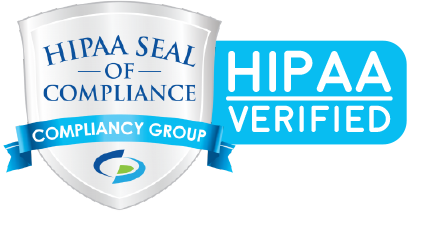As seen in – Applied Clinical Trials
October 20, 2021

Before the pandemic, a December 2019 Industry Standard Research survey found that 38% of pharmaceutical sponsors and contract research organizations (CROs) expected virtual trials to be a major component of their portfolios, and 48% expected to run a trial with most activities conducted in participants’ homes. One year later when attendees at McKinsey’s Clinical Operations Roundtable were asked the same questions, the responses were 100% and 89%, respectively.
Today, most are asking what trials and what aspects of trials can be effectively decentralized and to what degree. Fully virtual or decentralized clinical trials (DCTs) typically handle all enrollment processes and assessments in a patient’s home, enabled by end-to-end digital tools and involve the self-administration of medicines. This model is gradually migrating from smaller, early-phase and post-approval studies toward larger pivotal trials, such as Otsuka and Click Therapeutics’ landmark fully remote clinical trial to investigate the effectiveness of digital therapeutics in reducing symptoms in adults diagnosed with major depressive disorder (announced in Feb 2021).
In the near term, sponsors, investigators, and CROs expect fully virtual trials to remain limited to a narrow set of use cases, such as a well-characterized drug with few adverse events in a mild indication, with end points suited to remote measurement. Long-term, however, fully virtual trials will be more widespread—especially in certain therapeutic areas such as rare disease, mental health, central nervous system, neurodegenerative and others that require patient populations that can’t physically travel or don’t live near a site.
Ultimately, the therapeutic area alone shouldn’t determine a trial design. Rather, each trial should be designed for-purpose and centered on patients. The target patient population, treatment, and indication will primarily determine whether a trial is fully virtual, hybrid or a traditional site-based trial. Even so, there are defining patient population characteristics in many therapeutic areas that can make some studies more likely candidates for all-virtual research.
Here are five therapeutic areas that are particularly apt for an all-virtual research approach, and that can serve as an entry point for hesitant sponsors interested in exploring this growing DCT model.
Diabetes—More than one in 10 Americans have diabetes and one in three or 88 million adults are prediabetic. Given the disease’s prevalence and its widespread geographic reach including many rural areas, diabetes is ripe for fully virtual research. Blood glucose values can be monitored continuously with wearable devices attached to the patient’s skin and automatically uploaded to a central platform in the cloud for easy access by trial investigators, sponsors, and the patients themselves.
In addition, the propensity of patients with Type two diabetes to be elderly or struggle with obesity can make it difficult for patients to travel to trial sites. These patients often have vascular problems which also can also hinder mobility. Further, diabetes is rampant in certain demographics such as Native Americans who are twice as likely to have diabetes as whites and often live in remote rural areas far away from the nearest clinician. Virtual trials bring lifesaving treatment to these patients and further the development of treatments that reflect the unique needs of a more representative population.
Cardiovascular—With wearable devices, including Apple watches, that monitor increasingly more sophisticated and wider range of cardiovascular endpoints remotely, research focused on cardiovascular diseases are apt for a fully virtual trial design. These devices accurately monitor and measure cardiac events and catch issues, such as atrial fibrillation (a common type of sustained cardiac arrhythmia) and ventricular tachycardia (abnormally fast heart rate) to alert the patient and remote physician in real time. Even some clothing items, such as bras, have sewn-in heart monitors! There are other devices that can be worn continuously for months at a time to capture more sophisticated measurements and automatically send data into the cloud. The same is true when it comes to managing blood pressure.
Like diabetes, cardiac patients are in all corners of the world and often many hours from central research sites and—due to their condition—may have mobility challenges and concerns. Virtual trials extend access to the millions living with heart disease and high blood pressure. Further, the data gained from continuous and multiple-symptom monitoring of cardiac patients is dramatically more useful in comparison to the less-reliable, one-hour, single-symptom testing completed at a site once a month or every few months. Heart arrhythmia often occurs only intermittently so it may not be picked up at the occasional site visit. Today’s wearable devices monitor blood pressure, heart rate and rhythm, and oxygen saturation levels as well as activity level (steps taken) so researchers can superimpose different measurements depending on what endpoint is being studied or combine multiple measurements for more meaningful information.
Central nervous system (CNS) diseases—Parkinson’s Disease, Multiple Sclerosis, Alzheimer’s disease, and other CNS diseases may dramatically impact patients’ mobility as well as hamper caregivers’ ability to bring affected loved ones to frequent clinician visits. All-virtual trials open these patients up to potential opportunities they might not otherwise ever have for a treatment.
Like cardiac wearable devices, there are an increasing number of new technologies that allow researchers to measure novel endpoints of patients in the comfort of their own homes and in more realistic life settings outside of a doctor’s office. Devices can continuously measure number of hand tremors per minute, for example, so a novel endpoint could be the reduction of hand tremors which was not as easily studied in traditional trials.
An electroencephalogram (EEG) is a widely used non-invasive method for monitoring the brain but has historically been a large and bulky technology, restricted to the monitoring of subjects in a lab or clinic while they are stationary. Today, we can use a wearable EEG, which overcomes these limitations and allows the long-term, non-invasive recording of brain signals at home.
Neuromuscular trials—Like patients with CNS disorders, patients struggling with neuromuscular diseases, including Duchene Muscular Dystrophy may have severe mobility challenges that make it difficult to make regular clinician visits. Fortunately, there are advanced activity monitors that do not interfere with movement on these patients such as ankle bracelets that can record various measurements continuously to, say, show how much activity a person takes part in over a period. Red Nucleus Clinical’s iTakeControl platform is a clinically approved solution that enables HIPAA-compliant video assessments of patients, live video research visits and audio recording to provide richer audio/visual data that is also auditable for compliance purposes.









